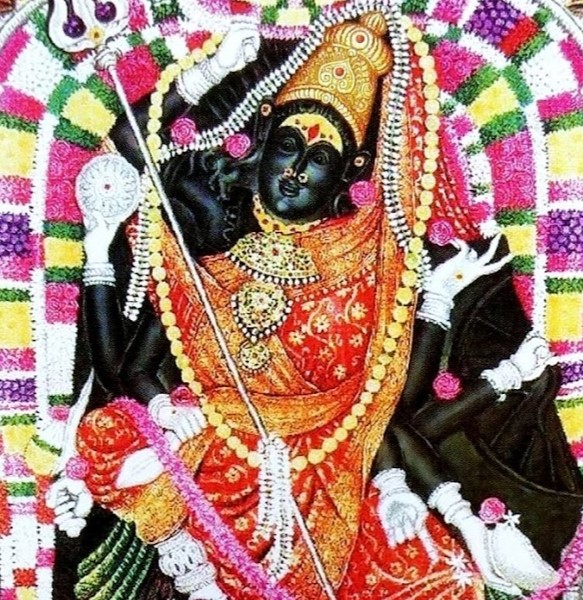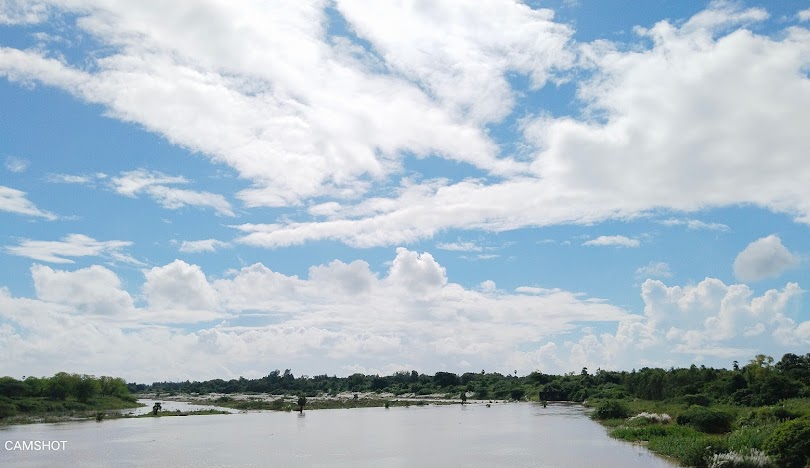The temple is located on the banks of the river Varaha and is believed to be over 2000 years old. According to the information displayed at the temple, it was originally constructed by King Aditya Chola. The present stone structure, including the Chandramowleeswarar shrine, was built during the reign of the Chola king Aditya I (870–907 CE). While the exact year of the temple's construction could not be determined from the inscriptions, the current form of the temple, particularly the stone edifice of the Chandramowleeswarar shrine, is attributed to the period of King Aditya I.
PURANIC SIGNIFICANCE:
Legend of Vakrasuran
According to legend, there once was a Demon King named Vakrasuran, who was a staunch devotee of Lord Shiva. He performed rigorous penance here, and in response, Lord Shiva granted him the boon of immortality. Empowered by immortality, Vakrasuran began terrorizing the celestial gods (Devas), causing havoc in the heavens.
Lord Shiva's Intervention
The Devas, unable to withstand the atrocities of Vakrasuran, pleaded with Lord Shiva to save them. Lord Shiva, upon hearing their plea, instructed Lord Mahavishnu to defeat and kill Vakrasuran. A fierce battle ensued between Lord Vishnu and the demon.
The Blood of Vakrasuran
During the fight, as soon as Vakrasuran’s blood touched the ground, demons began emerging from it. To prevent this, Goddess Parvathi, in the form of Vakkra Kali, was sent to drink the blood before it could fall to the ground. Lord Vishnu used his divine weapon, the Sri Chakra, to finally kill Vakrasuran.
The Tragic Fate of Dhunmukhi
When Vakrasuran's sister, Dhunmukhi, arrived on the battlefield, she was pregnant. In a remarkable act, Goddess Parvathi took out the baby from Dhunmukhi’s womb and wore it as an earring. Afterward, she killed Dhunmukhi, and in the aftermath, stayed in the region in the form of Vakrakali.
Naming of the Place
As Vakrasuran had worshipped Lord Shiva at this location, the place became known as Vakkarai. Other names associated with this place include Kundalivanam, Dhukrapuri, and Vakrapuripattinam.
Worship of Lord Shiva by Chandiran
It is also believed that the Moon God, Chandiran, worshipped Lord Shiva at this sacred place.
Legend of Vakrakali Amman
Lord Varadaraja Perumal destroyed the demon Vakrasura, and Vakrakali, a fierce form of Kali, destroyed his sister Dhunmukhi. Dhunmukhi, who was pregnant at the time of the attack, had her child removed from her womb by Vakrakali. Since killing a child is considered a sin, Vakrakali wore the child as a ring on her right ear. Due to her destruction of Dhunmukhi, Vakrakali is revered here in the temple.
Goddess Vakrakali's Temper and Acharya Sri Sankara's Intervention
Vakrakali, in her furious form, was calmed by Acharya Sri Sankara, who installed the Sri Chakra on her left leg, reducing her anger. Kali, as a deity associated with the serpent planets Rahu and Ketu, has a specific circumambulation rule. Devotees must circle the shrine four times clockwise and five times anti-clockwise to honor this cosmic connection.
Vakrakali Amman - Vakra Shanti Tiruthalam
This temple became widely known due to the grace of Mother Vakrakali Amman, and the place came to be called Vakra Shanti Tiruthalam. The idol of Vakrakali is sculpted with deep devotion and shares attributes with other famous manifestations of Kali, such as Patteeswaram Durga, Chidambaram Brahma Chamundeeswari, and Thillai Kali.
Temple Location and Structure
Traditionally, Kali temples are located at border areas, and here at Tiruvakkari, the shrine of Vakrakali is situated under the Rajagopuram of the main Shiva temple at the entrance.
Description of the Vakrakali Idol

The idol of Vakrakali is awe-inspiring, with striking features:
The head is adorned with flame-like hair.
A skull serves as her crown.
The child (Sishu) is worn as a ring on her right ear.
The goddess has eight hands, each holding a weapon:
Pasam (noose)
Discus
Sword
Skull of a wild animal
She wears a garland made of the heads of demons, crossing it over her body, with the upper sari ending on her right hand through her breasts.
The administration of the temple is typically managed by the Hindu Religious and Charitable Endowments (HR&CE) Department under the Government of Tamil Nadu, or it may also be managed by a local temple trust or mutt depending on the specific temple.
.jpg)
